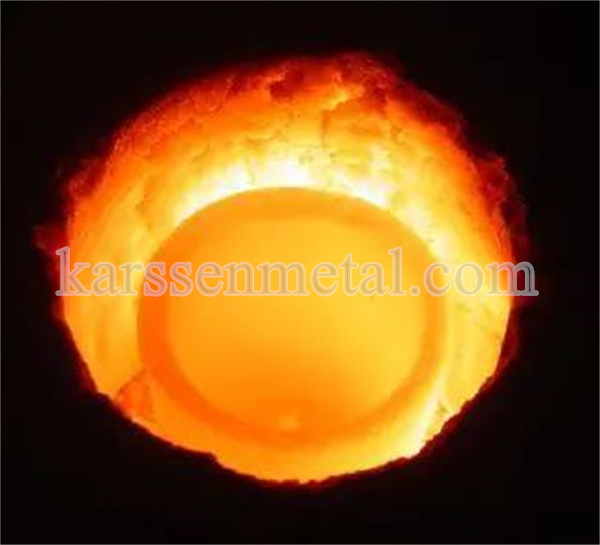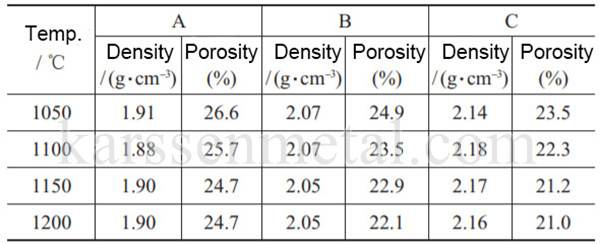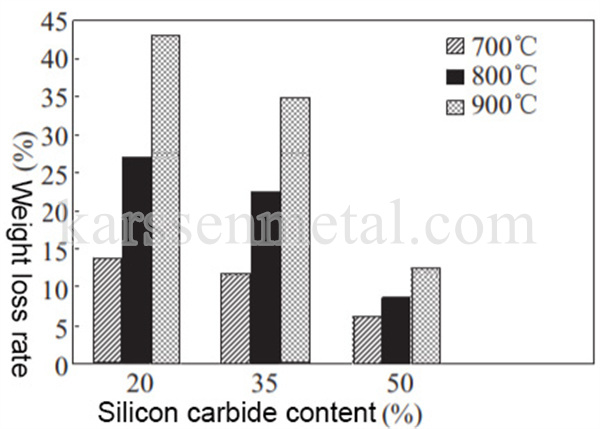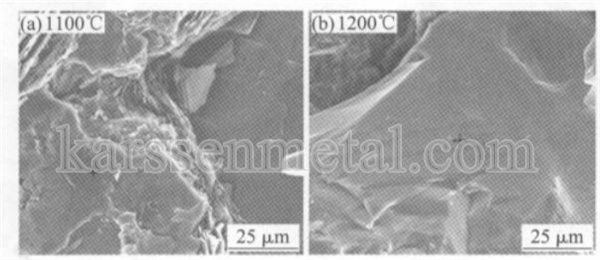Email: info@karssenmetal.com Tel: +86 18147353336
The earliest crucibles in history were made of clay, but now as long as the material can withstand high enough temperatures, it may become a qualified crucible, such as quartz, graphite and corundum are common crucible materials. Among them, graphite crucible is the most suitable crucible for melting a variety of alloys in small quantities. Because of its good high temperature performance and long service life, it is used in large-scale alloy smelting and casting processes and ore melting analysis.

(Gold melting in a graphite crucible)
However, since graphite crucibles are basically under high temperature conditions and there is a lot of air around, they are easily to be oxidized. Moreover, in the process of smelting, casting and melting, the graphite crucible will be severely corroded, reducing its service life. In order to improve the service life of graphite crucibles, scientists have come up with a method of adding corrosion-resistant materials to graphite crucibles.
Among the materials that can be considered, silicon carbide has stable chemical properties and strong corrosion resistance, and the oxidation product at high temperature is SiO2, which can reduce the porosity of ceramic crucibles and improve the density, so it is considered to be the most suitable material, which can effectively improve graphite crucible’s service life. It is a good helper.
However, adding materials should also pay attention to science, not to mess around. A reasonable combination can maximize the advantages of both. generally speaking:
1. As the content of silicon carbide increases, the density of the graphite crucible increases, and the porosity decreases.
This is mainly because the density of silicon carbide is 3.2g/cm3 and the density of graphite is 2.62g/cm3, so as the content of silicon carbide increases, the total volume of the graphite crucible can be reduced, the bulk density gradually increases, and the pores rate decreases sequentially.
Table: Bulk density and porosity of graphite crucible samples with different silicon carbide content

2. With the increase of silicon carbide content, the weight loss rate of graphite crucible gradually decreases; The higher the oxidation temperature, the faster the graphite crucible oxidizes; the longer the oxidation time, the greater the weight loss rate of the graphite crucible, reducing its oxidation resistance.
This is because, on one hand, SiC has good oxidation resistance. SiC firstly reacts with CO to generate SiO gas and solid carbon. The carbon is deposited on the surface of SiC, and then the SiO gas diffuses to the surroundings and reacts with CO to generate SiO2 and C. These reactions make CO is reduced to C, and the volume expands. The expanded volume will block the pores in the graphite crucible, so that oxygen cannot enter the crucible, thereby reducing its weight loss rate and improving oxidation resistance; On the other hand, the graphite in the crucible is scaly, with a large contact area with oxygen, and its oxidation rate is fast. Therefore, as the graphite content decreases, the oxidation resistance of the graphite crucible will also be improved.

3. The higher the silicon carbide content, the denser the graphite crucible; and the increase of the sintering temperature also enhances the compactness of the graphite crucible within a certain range.
This is mainly because when SiC is oxidized at high temperature, a glassy phase of SiO2 will be formed, which flows and fills the pores in the graphite crucible. With the increase of SiC content, the liquid phase formation will also increase. Therefore, the higher the silicon carbide content, the higher the density of the graphite crucible.

The above picture is a photo of the microstructure of the crucible under sintering conditions of 1100°C and 1200°C. It can be seen that the densities of the samples at different sintering temperatures are also different. The compactness of samples sintered at 1200°C are much better than those sintered at 1100°C. Because the material has melted at a high temperature of 1200 °C, more liquid phase fusion occurs on the contact surface, forming a continuous sintered network, through which all materials for preparing the crucible are integrated into a whole, thereby improving its compactness.

In recent years, industrial activities based on casting are developing rapidly, such as mining, railway, aviation, etc., so the demand for crucibles is also increasing. After adding silicon carbide as a small helper, graphite crucible has the advantages of high thermal conductivity, thermal shock resistance, high heat resistance, corrosion resistance, mechanical impact resistance, oxidation resistance, blocking resistance, etc. It is used as a container for smelting non-ferrous metals such as aluminum and aluminum alloys, copper and copper-based alloys, nickel and nickel alloys, precious metals, zinc and zinc oxide. At present, graphite-silicon carbide crucibles have gradually replaced clay crucibles, and the demand in the market has accounted for about 97% of the whole. I believe that there is still a lot of room for development in the future.
Isostatic graphite blocks are an important graph
Graphite rotor belongs to graphite material, whi
Graphite sheets have many important roles in the
Contact: Bateer
Phone: +86 18147353336
Tel: +86 18147353336
Email: info@karssenmetal.com
Add: Room D204-2203, Innovation Building, Baotou Light Industry Vocational Technical College, 19 Jianhua Road, Qingshan District, Baotou City, Inner Mongolia, China.